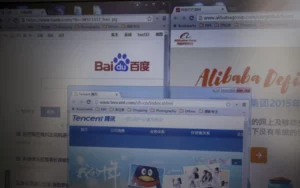It is hard to run a business in the globalized world without hearing of the advantages of sourcing to China. Without a doubt, China (as well many other Asian countries) can help giving your company a competitive advantage in today’s dynamic business environment by taking their individual capabilities into consideration. However, the first step to achieving this objective is to thoroughly understand the process and sourcing methods that are connected to this broad subject.
The underlying process of sourcing and all the different sourcing methods is called procurement. Sourcing is the stage of evaluating new relations with suppliers in the act of buying goods or services from an external source. Other equally important steps in the procurement process include communications, negotiations, logistics and other administrative tasks.
Sourcing does not strictly mean only looking to purchase cheap products but the emphasis is on acquiring newly formed business partnerships. While many companies only look to benefit from cheaper manufacturing, others look for specialized skills or the creation of leaner operations. Furthering efficiency and ultimately achieving business objectives are common goals of sourcing.
The term sourcing is usually used as a synonym for outsourcing in everyday language. This is roughly correct as long one is not concerned with insourcing. As the term suggests intuitively, it means that a company integrates a process that was formerly conducted by a partner outside of the core company. Since this is relatively uncommon, the focus here is on outsourcing to China, Asia in general or elsewhere.
The basic principle of how tasks in a company can be handled: Do them yourself or
find someone who is more efficient.
Outsourcing Front and Back Office
Efficiency gains can be accomplished through moving business operations abroad, which is notoriously referred to as “outsourcing”. However, outsourcing takes many different forms, from moving your own business departments abroad to teaming up with a domestic supplier for the provision of certain goods or services.
Generally, there are two different areas to outsource: front and back office functions. For example, back office functions are generally centrally focused and are usually not revenue generating services themselves but are still integral to the running of the company.
Examples include human resources, accounting and manufacturing. All of these departments have become increasingly popular to outsource, especially with smaller companies who may not need dedicated departments for these functions. They often prefer the inherently more flexible and scalable payment model available with outsourcing when contrasted with full time employees.
On the other hand, front office departments have directly revenue generating roles and are in personal contact with clients, such as sales departments and customer service. Despite that front office roles are also popular to be outsourced, it is less common than for back office functions since its functions are usually seen as more intimate.
A common example is that particularly large companies are moving customer service call centres to English speaking low cost countries such as India.
While both areas are becoming increasingly common to be outsourced, one should be aware of the advantages and disadvantages of outsourcing, especially from the viewpoint of the customer. While the company’s expenses may decrease, other non-financial factors can affect customers purchasing decisions and hence profits.
If they notice a decrease in quality (be it with the response times for orders or the product itself) the overall effect may be negative. Therefore, easier control and the possibility to hide process changes in the case of outsourcing of back office function are usually seen as the main reasons for its larger popularity compared to front office functions.
Advantages & Disadvantages of Outsourcing
While traditional sourcing with a partner company you should be first learn about the strengths and weaknesses of other nations. Initially, people only think of China for their outsourcing of manufacturing services. As China’s economy shifts into a service based economy, their potential for other, non-manufacturing services is increasing.
China, being a developing country, has an ever maturing services sector with increasingly adequate professional services for various tasks. China’s manufacturing capabilities offer a good compromise between professionalism and price. However, China lags behind other Southeast Asian countries in services.
Thanks to advances in information technology and logistics, many of the normal business processes that need to be conducted no longer have to be centralized within your company. Other companies will allow you to make use of the expertise and skills required for certain jobs by being specialized in certain back office or front office functions.
Therefore, you can spend more time focusing on the core revenue generating roles, while knowing the outsourced tasks will still be completed by handing over responsibility to other companies (abroad).
With issues regarding the set-up, quality concerns, lead times and miscommunications being discouraging to potential purchasers, these can all be addressed by using the help of a 3rd party sourcing services provider.
Accessing premium suppliers through using procurement and sourcing companies can minimize risks not only for the initial identification process, but also by other procurement services such as, for instance, 3rd party quality testing and factory inspections.
Sourcing might seem easy with the availability of numerous online portals;
however, they do not solve all problems.
Different Types of Sourcing Methods
There is a wide range of sourcing methods and one should bear in mind three key points: 1) sourcing options are often not mutually exclusive 2) sourcing methods can be applied to both front and back office functions and 3) strategic sourcing as a procurement process can be seen as finding the appropriate solution for your short and long-term goals.
A few strategic sourcing methods can be applied:
Low-cost Country Sourcing
A method of sourcing which focuses on benefiting from the competitive advantage of other countries which are able to offer lower labor and production costs. The method focuses on cutting overall operating expenses for a firm, and is in itself a procurement strategy. Most companies which look towards China are following this sourcing method.
Global Sourcing
A similar sourcing method as to the previously mentioned low-cost country sourcing; however, this type of sourcing is not strictly about benefiting from cheap production. The aim may be to get a taste of the international market and the way to carry out business there.
Alternatively, the focus could be on tapping into a new range of skills or resources which would otherwise be unavailable domestically.
Prime/Sub Arrangements
An outsourcing method in which a client works direct with an established outsourcing provider to arrange procurement; the outsourcing provider contracts out the work to a smaller company. All contracts are dealt under offshore law, as the agreements are between 2 offshore entities.
This can reduce the burden of dealing with import and export restrictions upon the company, and make the process itself smoother.
Captive Service Operations
This occurs when the outsourced services being provided are performed by a company the customer owns or are from within the same group. This creates a greater level of control, as well as addresses questions that may arise about confidentially, security and infringement rights. However, the same level of economies of scale may not be achieved as well as the opportunity to take advantage of supplier’s expertise.
Conventional Agreements
The traditional way to outsource parts of a company’s operations. Two companies create a simplified agreement to allow for maximum cost reduction through utilizing economies of scale and expertise. However, there is a significant loss of control and there needs to be a high degree of trust as sensitive data may be at risk.
Commonly Outsourced Services
Besides of the rough difference between front and back office departments, it is also common to differentiate concrete types of services that can be outsourced. The distinction of the four following types of services is the most common one to differentiate sourcing methods.
These can also be seen in the context of strategic sourcing, where a firm continuously leverages its procurement process to benefit its purchasing activities by reassessing the sourcing potential of each service.
Operational
Operational services are most frequently outsourced by the manufacturing industry than when compared to other industries due to the nature of the work. This creates specific tasks that are suitable to be given control to by external providers.
Machine maintenance and repair is commonly outsourced, as there is not necessarily the need to have a full time employee who possesses these skills if the work is infrequent. Other operational roles may include general facility management and maintenance, including cleaning or landscaping.
Professional Services
These services are the most commonly thought of when people think of outsourcing. Departments like legal, accounting, human resources and so forth all come under this category. The need for professional expertise in these areas may only be needed at certain times, and by contacting an external provider you can scale the cost along with the growth of your company. This usually means overhead costs are significantly reduced.
Manufacturing
Many companies also seek to outsource the manufacturing process. This can be done by small companies who do not have the resources to manufacturer themselves, or even large corporations like Apple who prefer to use the strengths of external companies.
Generally, this arrangement is with a supplier who can create a tangible good based off a provided design (see Original Equipment Manufacturer/OEM article) or with a supplier who already has a range of pre-existing product lines (see Original Design Manufacturer/ODM article).
Process Specific
Process specific outsourcing refers to a unique process or specific internal procedure. It is commonly found in the service industry, for example, a newspaper may outsource the actual delivery to professional courier companies.
This creates a situation where the original company can focus on their core operations, while handing over the responsibility of an important task to another company that specializes in it.
Sourcing from Asian Countries
While you may have identified that your company would benefit from the advantages other companies in other countries offer, actually knowing the way to proceed can be difficult. Sourcing is mostly about having contacts and knowing where to find new contacts. When it comes to complex sourcing processes, there is no way around a 3rd party procurement and sourcing company.
You may just want to find suppliers for either pre-existing goods, or find suitable manufacturers to contact to determine whether they are able to meet your needs. A good initial starting point would to use the website Alibaba.
The Alibaba Group itself is a Chinese E-commerce business that focuses on sales relating to business to business sales by linking suppliers in China/Asia with international buyers seeking products.
While the Alibaba may suit the needs of some companies, the usefulness is limited. If your company is looking further than generic products, using Alibaba to find a supplier versatile enough to meet your needs becomes difficult.
Certain barriers can prevent sourcing from being effective. Issues such as language barriers and disreputable manufacturers can cause a hindrance. Fortunately, there are 3rd party companies which can be used to ensure the overall process runs smoothly.
Companies offer services such as, 3rd product sourcing, supplier analysis, quality control and factory inspections allow to effectively and efficiently link companies together and create long lasting working relationships.






